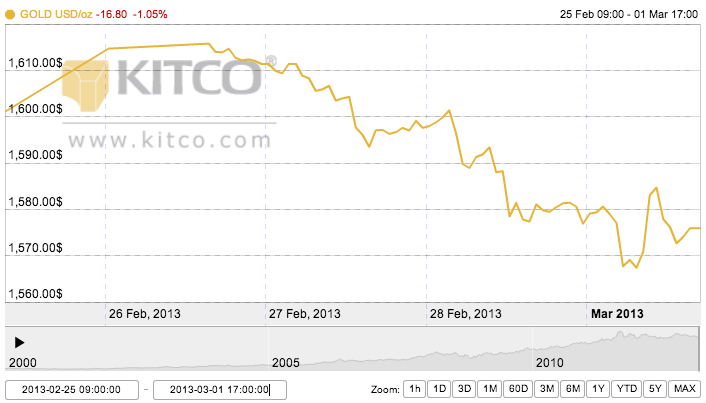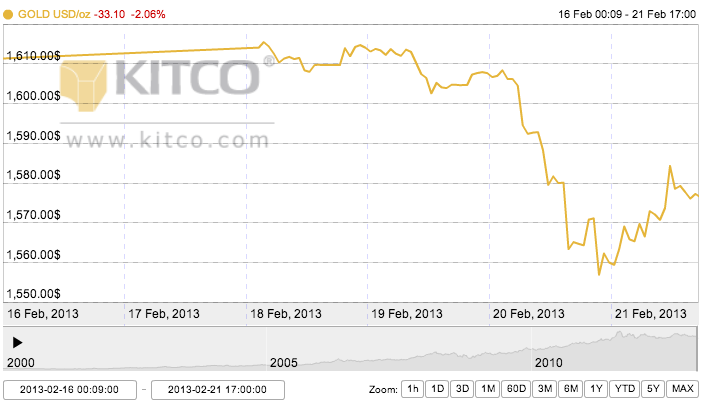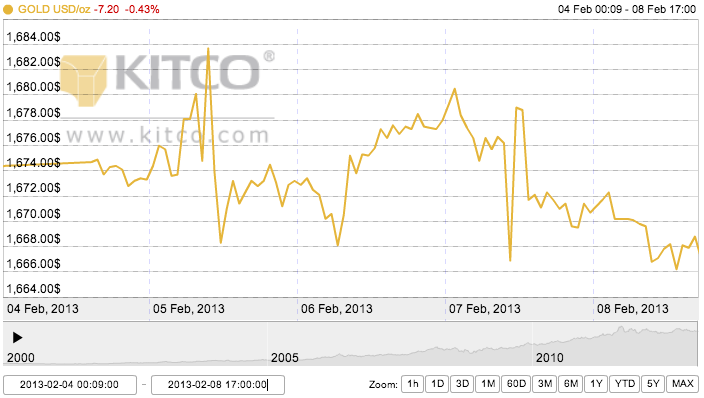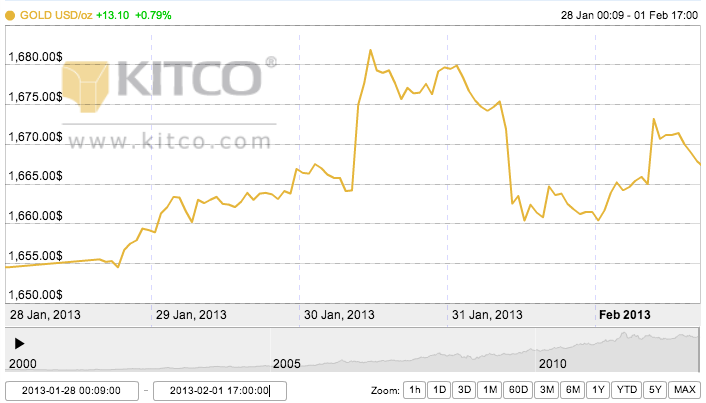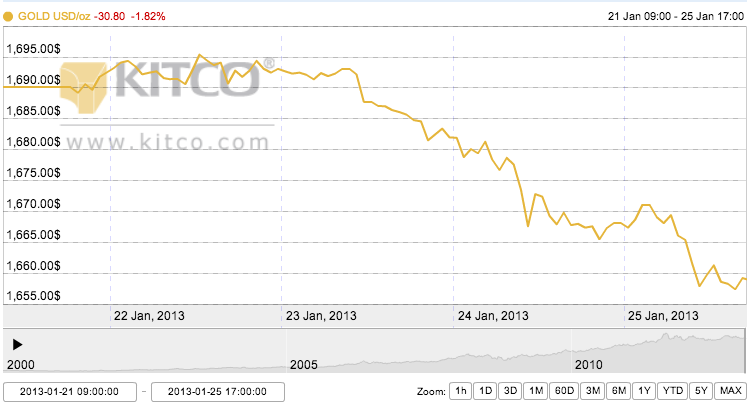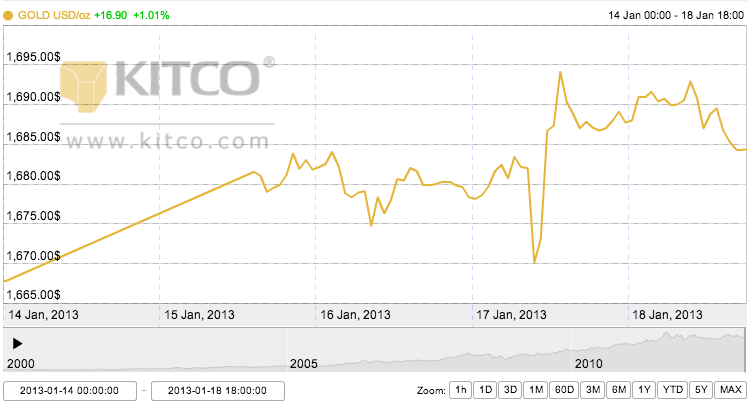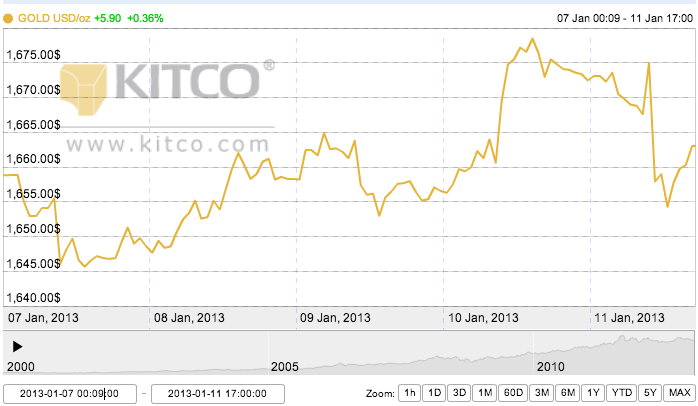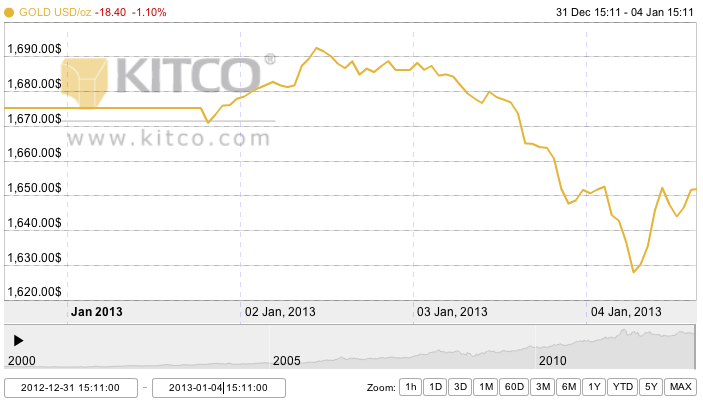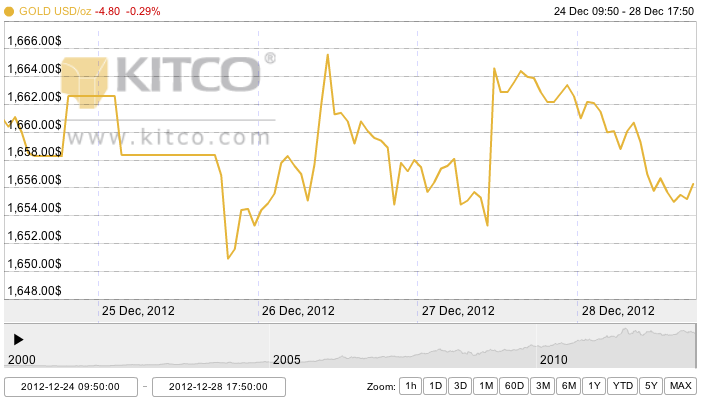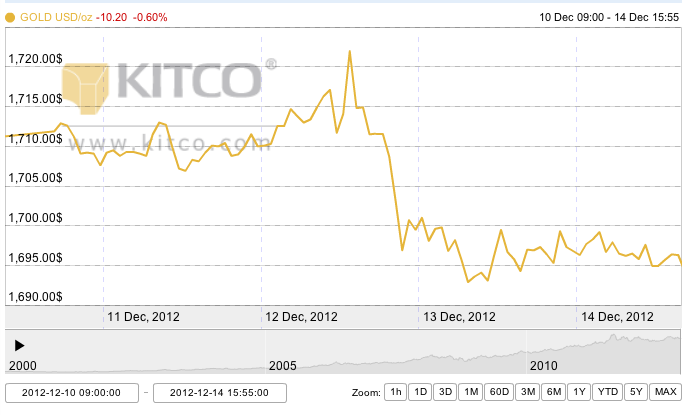Monday Open: $1,593.60
Weekly High: $1,615.80
Weekly Low: $1,567.40
Friday Close: $1,575.90
After last week’s abysmal returns for gold, this week started off faring a little better as short-term investors swooped up the advantages of the low price of gold over the weekend. Monday opened very near the $1,600 mark, rose a little above it early in the week, but ended lower again. There was also some global news that was positive for gold on Monday, including more gold purchases in Russia, a lowered debt status for the UK and a monetary easing program in Japan.
Tuesday was the best day for gold this year so far. The yellow metal enjoyed 2% gains after a speech by Federal Reserve Chairman Ben Bernanke, in which he further reinforced his support for the current quantitative easing programs. There had been talk in the past few weeks of rethinking the low interest rates and bond-buying programs, but his speech on Tuesday provided a much-needed sigh of relief for gold investors.
Right before gold spiked on Tuesday, Monday marked the day when Goldman Sachs predicted the end of gold’s 12 year winning streak. Mixed signals much? Predictions for gold are all over the place right now, as some gold bugs firmly believe gold is just experiencing a rough patch and will continue toward the $2,000 mark this year, while others are seeing a bleaker picture for the precious metal.
Another factor that had been contributing to gold’s rise early in the week was a gridlocked election in Italy that some suspected may cause financial unrest in the country. However, by Wednesday the situation had calmed down enough for those buyers to leave the gold market, causing a short drop in price. Profit-takers also dragged down the market as they collected wins from Tuesday.
Friday marked the first day of March, and reports came rolling in that showed gold in an unfavorable light. The last day of February marked the fifth straight month that gold has experienced monthly losses. Improved global economics are lessening strength in gold as a safe haven. The dollar was also stronger on Friday, pushing gold down even further.
